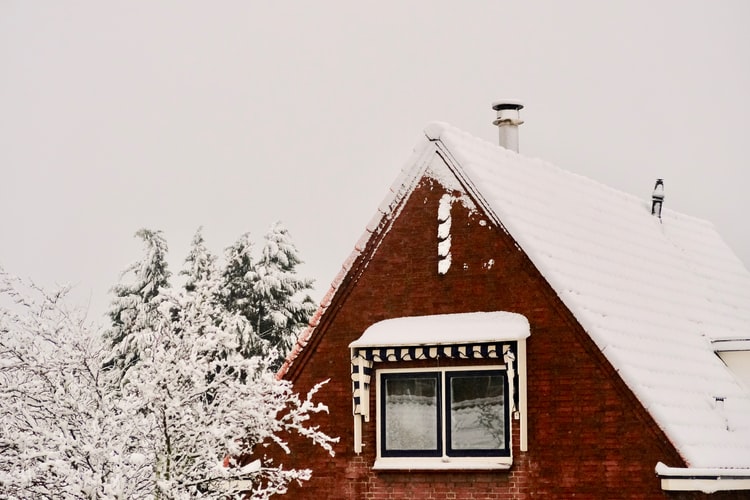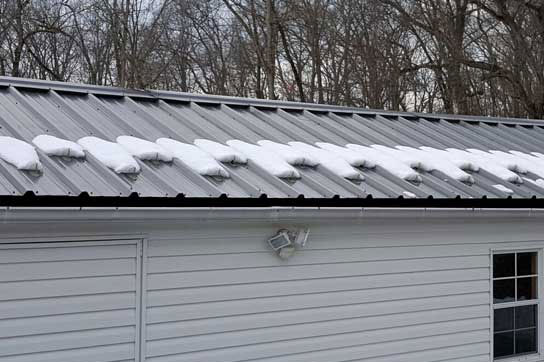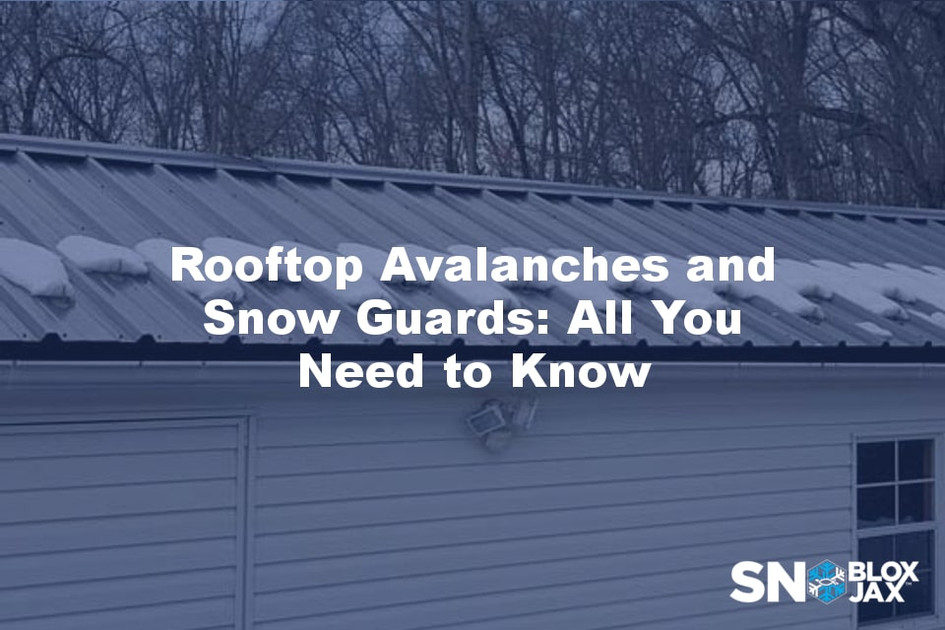Rooftop Avalanches and Snow Guards: All You Need to Know
Posted by Snoblox Snojax on Jul 27th 2020
What is an avalanche? An avalanche is a huge mass of snow, ice, and rock falling quickly down a slope of a mountain. Now, picture your rooftop in the winter season. While others may be astonished by the light and fluffy stuff falling graciously from the sky, snow can be as deadly if you do not have the proper retention device installed on your metal roof.
So how exactly does a rooftop avalanche occur?
In Layman’s Term:
Generally, roofs made of metal are quite slippery when wet, mainly because of their smooth surface. The metal finishes are designed to allow accumulated snow avalanche off roofs after some time, hitting the ground, or, worse, people and property.
Science Says:
Two bonds form between the metal surface of the roof and snow during a snowstorm when sunlight is obstructed. The first one on the ridge whilst another, on the slope. If the mound of snow exceeds the strength of the slope bond due to gravity, then an avalanche occurs. In another instance when the sun comes out, UV rays penetrate the roof underneath causing the initial bond to be completely broken, thus producing melted snow. The meltwater acts as a lubricant, breaks the ridge bond to create an avalanche.

What factors contribute to a rooftop avalanche?
Wind
The direction of the wind highly affects snow stability. Usually, it hits on a roof surface, picks up snow, and carries it to the opposite side of the ridge. Wind slabs then form quickly, and if present, weaker snow underneath has a little time to adjust to the new load.
Weather
Winter season may have high latitudes, high altitudes, or both, creating unsettled weather for precipitation. A mild, winter weather will help the accumulation and stabilization of a snowpack. However, extreme wind, cold and high temperatures will weaken the latter.
Dynamics
Snow slab weight, friction between the snow slide and underneath surface and shear resistance between snow particles and the avalanche. All these dynamics, in one way or another, may cause a rooftop avalanche.
Can snow slides cost lives?
Unfortunately, roof slide incidents often cause serious injuries and deaths. One male fatality was recorded in March 2019 in Colorado. In 2018, the life of a mother and son was ended by what was dubbed as, “a freak accident” when they were found buried under 3 feet of snow near the front door of their vacation condo in Lake Tahoe, California.
Winter Hazards and Precautions
It may be the most wonderful time of the year but may also be unsafe if we are not careful about the hazards it may bring. Following are some hazards and the precautions we can take during this season:
1. Slips, trips, falls due to slippery surfaces- wear proper footwear (insulated and water-resistant boots)
2. The danger of the roof collapsing if there is too much snow – thorough inspection should be done by a hazard professional to make sure the structure is still safe
3. Invisible skylights - take extra precaution as too much snow hides skylights risking a person to fall through
4. Overhead power lines causing electrical hazards- use appropriate tools and PPE (Personal Protective Equipment)
5. Stress and exhaustion- cold weather may cause heart strain. Make sure to take breaks and avoid overexertion.

Snow Retention System - Snow Guards
As the name implies, snow retention is a system that mainly consists of snow guard devices designed to avoid rooftop avalanches.
Importance of Snow Guards:
●Prevents sliding of large sheets of snow and ice
●Protects your home and your loved ones
●Safeguards your property
●Ensures roof longevity
●Wise investment
Choosing the right retention system must be dependent on your roof type.
Some metal roof styles are:
●Standing Seam
●Panel
●Classic Rib
●Batten
●Trapezoidal
●Corrugated
It is always best to consult with a professional with ample experience installing snow guards, especially if you are a new homeowner or contractor.
Here is a list of snow guard styles for various applications:
●Polycarbonate
●Metal
●Copper
●Fence- style
●Pipe Style
●Standing Seam or Clamp to Seam
●Pad style
●Slate
●Shingle
●Tile
Now that you know your roof style and have an idea of the types of snow guards, how many of the latter should you purchase?
A snow guard layout and estimate is calculated using roof pitch, length of the roof, snow guard style, snow load, the length between the eve and the ridge, and a lot more. There is a free snow guard calculator at www.SpacingTool.com. Once you enter all of your project info, you will be emailed with the layout, number of rows, how to space the rows, how to stagger the rows, and an estimated cost for the system.
You have now figured out the costs, but what about installation?
Nearly all types of snow guards can be installed by the homeowner. If you don’t feel confident in your ability, then certainly call a local roofer, handyman, or gutter tech. Snow guards are shipped with detailed installation instructions. Simply follow the guidelines for a quality installation.
SnoBlox-SnoJax carries a complete line of snow retention products, give us a call at 800-SNOJAX-1 today.

